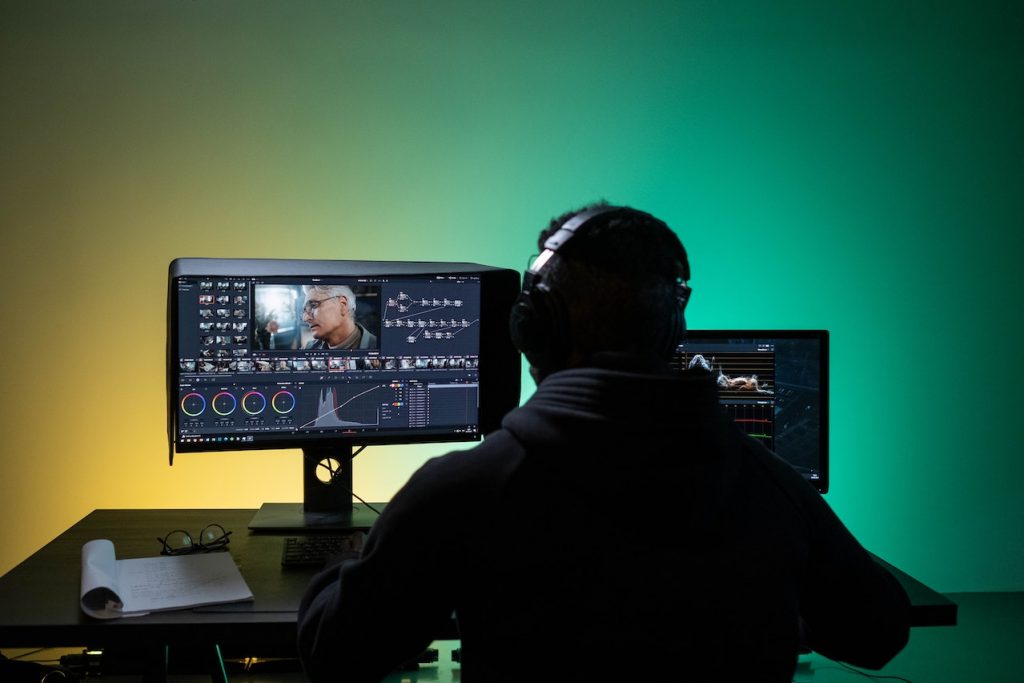
Professional video content is an effective way to communicate with your audience and engage them with your brand or message. Whether you’re creating a promotional video, a training video, or a video for social media, there are several essential tips that can help you create professional and high-quality video content.
In this article, we’ll cover seven essential tips for creating professional video content, including knowing your audience, choosing the right equipment, planning your content, using professional lighting, utilizing professional audio, using professional editing software, and promoting your content.
Tip 1: Know Your Audience
One of the most important tips for creating professional video content is to know your audience. This means understanding who your target market is and what types of content they will find most engaging and relevant.
To understand your target market, consider conducting market research to gather data on your audience’s demographics, interests, and behaviors. This can help you identify key characteristics of your target market and tailor your content to their needs and preferences.
Additionally, consider different types of content that may be most effective for reaching and engaging your target market. For example, if your audience is primarily young and social media savvy, short, attention-grabbing videos may be most effective.
On the other hand, if your audience is older or more professional, longer, more in-depth videos may be more appropriate.

Tip 2: Choose The Right Equipment
Choosing the right equipment is an essential step in creating professional video content. The type of equipment you need will depend on your budget and the type of content you are creating.
Consider your budget when selecting equipment. If you have a limited budget, you may need to choose more affordable options, such as a smartphone or a basic DSLR camera.
If you are a big Portland production agency and have a larger budget, you may be able to invest in more advanced equipment, such as a professional video camera or a camera with high-quality lenses.
Regardless of your budget, it’s important to invest in quality equipment. Cheap or low-quality equipment can lead to poor-quality video, which can be a turn-off for viewers.
Tip 3: Plan Your Content
Before you start filming, it’s important to plan your content. This includes creating a storyboard, which is a visual representation of your video, and deciding on a style.
A storyboard can help you visualize the flow and structure of your video, and can include sketches or images of each shot or scene. This can be especially helpful if you are working with a team or collaborators, as it can help everyone understand the vision for the video.
Deciding on a style for your video is also important. This can include the overall look and feel of the video, as well as the tone and mood. Consider the type of content you are creating and the audience you are targeting when deciding on a style.
Tip 4: Use Professional Lighting
Lighting is an important element of professional video content. Poor lighting can make your video look amateurish and can be a turn-off for viewers.
To create professional-quality video, choose the right lighting for your content. This may include using studio lighting, natural light, or a combination of both.
When using studio lighting, consider using a three-point lighting setup, which includes a key light, a fill light, and a backlight. This can help create a well-balanced and professional-looking video.
If you are using natural light, consider the time of day and the location of the shoot. Shooting during the “golden hour” (just after sunrise or just before sunset) can provide beautiful, soft light that is perfect for creating professional video content.
Additionally, be mindful of shadows and try to avoid shooting in direct sunlight, which can create harsh shadows and blown-out highlights.
Tip 5: Utilize Professional Audio
In addition to visual elements, audio is also an important factor in creating professional video content. Poor audio quality can be a major distraction for viewers and can ruin an otherwise well-produced video.
To create professional-quality audio, invest in quality microphones. This can include a lavalier microphone (also known as a lapel microphone) for interviews or a shotgun microphone for outdoor shoots.
In addition to using quality microphones, consider incorporating music and sound effects into your video. This can help set the tone and mood of your video and can make it more engaging for viewers. Just be sure to use copyright-free music and sound effects, as using copyrighted material without permission can lead to legal issues.
Tip 6: Use Professional Editing Software
Once you have filmed your video, it’s time to edit it. Using professional editing software can help you create a polished and professional-looking video.

There are many options for professional video editing software, including Adobe Premiere Pro, Final Cut Pro, and Avid Media Composer. Choose a program that meets your needs and budget, and consider taking a tutorial or course to learn how to use the software effectively.
In addition to basic editing, consider utilizing special effects to enhance your video. This can include adding transitions, adjusting the color grading, or adding text or graphics. Just be sure not to overdo it, as too many special effects can be distracting and take away from the content of your video.
Tip 7: Promote Your Content
Once your video is complete, it’s important to promote it to reach your target audience. There are several ways to do this, including utilizing social media and leveraging influencers.
Social media is a powerful tool for promoting video content. Share your video on platforms like YouTube, Facebook, and Instagram, and consider using paid advertising to reach a wider audience.
Influencers can also be a helpful way to promote your video. Collaborate with influencers in your industry or niche and have them share your video with their followers. This can help expose your content to a new audience and increase your reach.
Conclusion
Creating professional video content requires careful planning and attention to detail. By following these seven essential tips, you can create high-quality, engaging video content that resonates with your audience.
To summarize, the key tips for creating professional video content are:
- Know your audience
- Choose the right equipment
- Plan your content
- Use professional lighting
- Utilize professional audio
- Use professional editing software
- Promote your content
By following these tips, you can create professional video content that effectively communicates your message and engages your audience.







